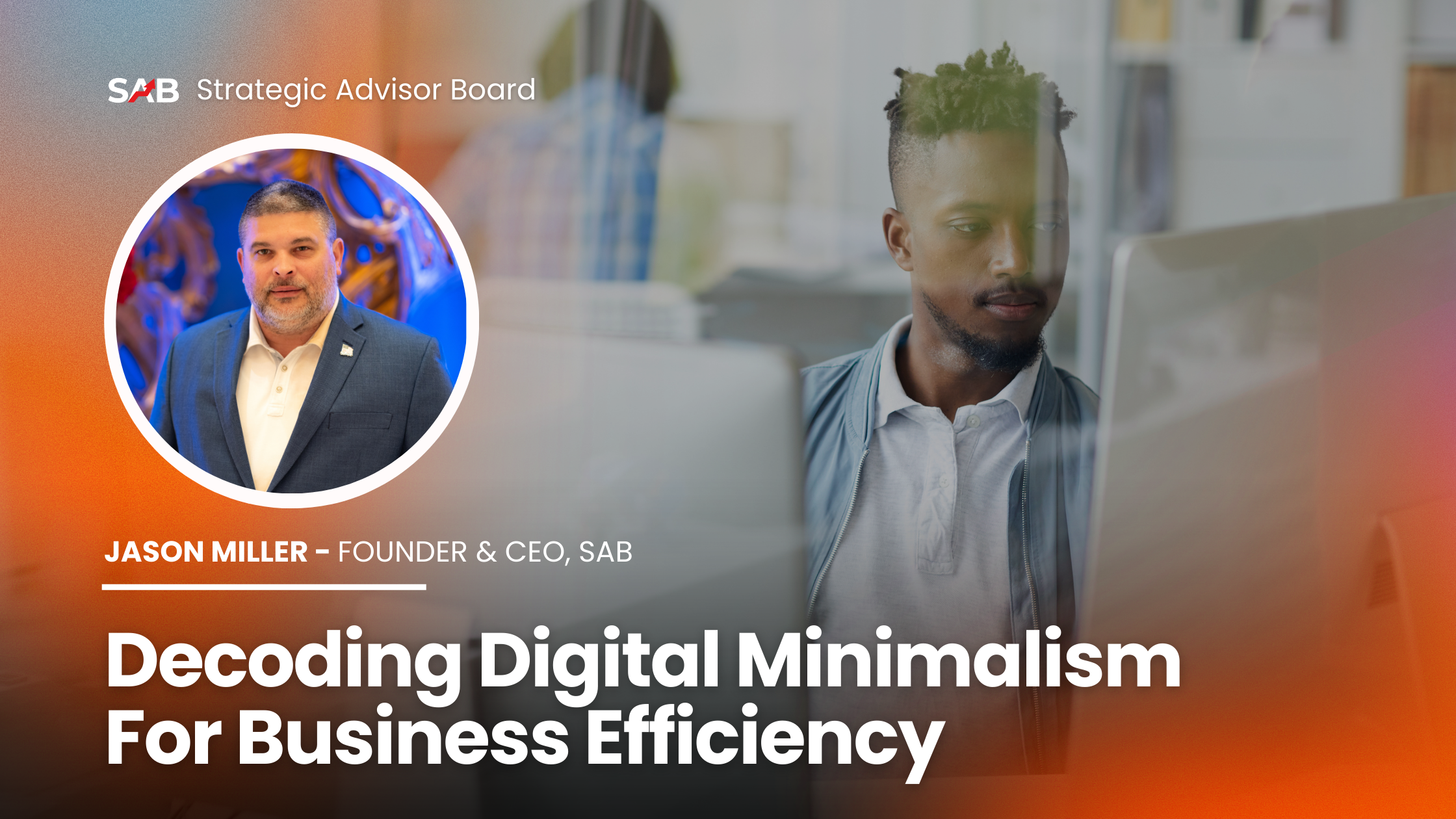
In the modern business landscape, we're bombarded with a plethora of digital tools designed to boost productivity and enhance connectivity. Yet, this digital abundance often leads to overload, creating distractions and inefficiencies rather than streamlining our workdays. Enter digital minimalism: a strategic approach to technology that emphasizes intentional usage for maximum benefit. This philosophy can help businesses cut through the noise, focus on essential tasks, and ultimately, drive greater efficiency and clarity in operations.
Digital clutter is more than just a minor annoyance; it can be a significant barrier to productivity and focus. Businesses today utilize an array of applications and platforms, from communication tools to customer relationship management systems. While each tool promises to add value, the cumulative effect is often a disjointed digital environment that saps time and energy. Digital minimalism offers a way out by advocating for a streamlined technology suite that supports business goals without contributing to cognitive overload.
The journey towards digital minimalism begins with identifying digital excess. This process involves a thorough audit of all the digital tools currently in use within the company. The key questions to ask include: Which tools are essential for our operations? Are there redundant tools that serve similar purposes? Can any tools be consolidated or eliminated?
For instance, a company might find that its teams use multiple, overlapping tools for project management, team communication, and document sharing. By identifying these overlaps, the company can consolidate its tech stack to reduce complexity and cost.
Once you have identified the unnecessary tools, the next step is to craft a minimalist digital strategy. This involves selecting technologies that integrate well and fulfill multiple needs, thereby reducing the number of tools required. It also means establishing clear protocols for how and when different technologies should be used to maximize efficiency.
For example, choosing a comprehensive platform that combines project management, real-time communication, and file storage can dramatically cut down on the switching costs associated with using separate applications for each function. Moreover, setting policies like "email for external communications only" can help streamline internal operations and reduce email overload.
Effective implementation of digital minimalism requires more than just technological changes—it demands a cultural shift. Training is crucial in helping employees adapt to new tools and understand the principles of digital minimalism. Such training should cover not only the technical aspects of the new tools but also the rationale behind using fewer tools more effectively.
Furthermore, company leadership needs to champion these changes by modeling minimalist behaviors. This could involve practices like scheduling regular digital detox periods where no emails are sent or setting up no-meeting days to encourage deep work.
Digital minimalism isn’t a set-it-and-forget-it solution. It requires ongoing evaluation to ensure that the technology in use continues to serve the business effectively without causing digital clutter. Regularly scheduled reviews of the digital tools and strategies can help identify new areas of waste and opportunities for further refinement.
Feedback from employees can be instrumental during these reviews. Understanding their experiences with the digital tools and any challenges they face can provide critical insights that drive continuous improvement in the business's digital strategy.
Businesses that successfully implement a minimalist digital approach often experience significant benefits. A streamlined tech stack can lead to improved focus and productivity as employees spend less time toggling between applications and more time on meaningful work. This increased efficiency can translate into faster project turnaround times, improved customer service, and higher employee satisfaction.
Moreover, by reducing the number of subscriptions and licenses for seldom-used software, companies can achieve substantial cost savings. These financial resources can instead be invested in upgrading core tools or in other areas of the business that directly contribute to growth and innovation.
In an era where business efficiency is closely tied to digital prowess, digital minimalism presents a compelling counter-narrative to the trend of tech saturation. By thoughtfully reducing digital clutter, companies not only enhance their operational efficiency but also foster a more focused and less stressful work environment. As businesses continue to evolve in a technology-driven world, those who can maintain simplicity in their digital practices will likely find themselves at a competitive advantage, poised for greater clarity, efficiency, and success.
Are you interested in growing your business with little or no work on your part? Check out our 1-Day Power Intensive to see if it’s right for you!
This article was brought to you by: Jason Miller, AKA Jason "The Bull" Miller, Founder/CEO and Senior Global Managing Partner of the Strategic Advisor Board - What has your business done for YOU today?